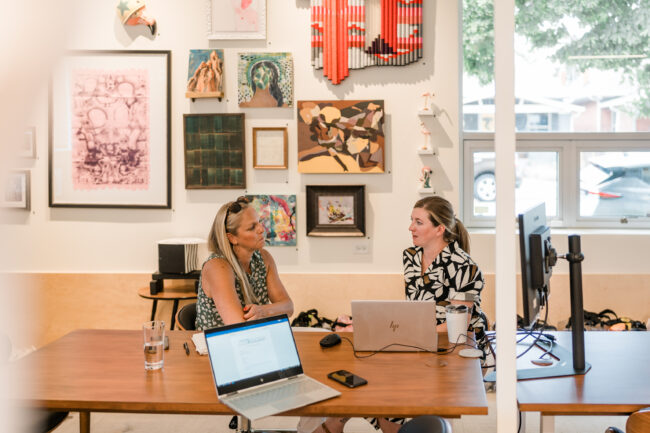
Though we’d all love for our artwork to “speak for itself,” the truth is that it’s always influenced by the unique perspectives of those who interact with it. That’s why an artist statement can help communicate key elements of your work, rather than strictly defining it for your audience.
A good artist statement will share with your audience the creative process, intentions, and themes behind your work, helping them better understand your art without explicitly dictating its meaning.
But where do you start? And when do you use it? We’ve got you covered.
Criteria:
- Know your intention. What goal do you want to accomplish with your statement? Being confident in your purpose will help keep your statement focused and free of confusion.
- Keep it brief. A strong artist statement should be clear, concise, and easy to digest (around 200 words).
- Keep it authentic. Don’t muddy your message with sophisticated jargon or flowery language. You know your art best, so use your natural voice and share your unique perspective.
- Be mindful of your audience. Similarly, remember that many readers may not be familiar with complex art theory or practices. Write your statement to resonate with a range of readers.
What to Include:
An artist statement typically discusses various aspects of your practice, such as the themes explored, techniques employed, influences, and the larger context within which the work exists. Below are examples of what you might include:
- Basic concept of the work/series – the overarching message of your artwork and basic philosophy
- Major themes or primary subject matters
- Process for creating your work – the materials, techniques, and mediums you typically employ
- Influences and inspirations
- Impact and intentions, such as the social, cultural, or political issues that your work explores
- How your work is different from other artists using similar material or a similar approach
Regarding autobiographical elements, remember that your artist statement should keep these limited. Such information can be included in a formal bio or resume. However, if details from your personal life are relevant to your work, you may consider incorporating them into your statement and referencing your bio for readers to learn more.
Additionally, keep in mind that you should regularly update your artist statement to reflect your current focus. As your artistic practice evolves, so too should your artist statement. You may even consider writing different artist statements for different bodies of work!
Where to Use It:
Your artist statement is one of your most powerful tools for promoting your work, so consider using it anywhere you want to market yourself – on your website, alongside your portfolio, in proposals, or when applying for grants or career opportunities. Other places to share your artist statement include:
- Social media
- Press kit and/or PR opportunities
- Jury submissions for art fairs
- Exhibition programs
- Artist talks and presentations
- Artist residencies
Practice tailoring your artist statement to each specific context, highlighting the aspects that are most relevant to the particular audience or opportunity. Altogether, remember that your statement should serve as a written companion to the visual elements of your work, providing a framework for your audience to interpret, appreciate, and connect with your creations.